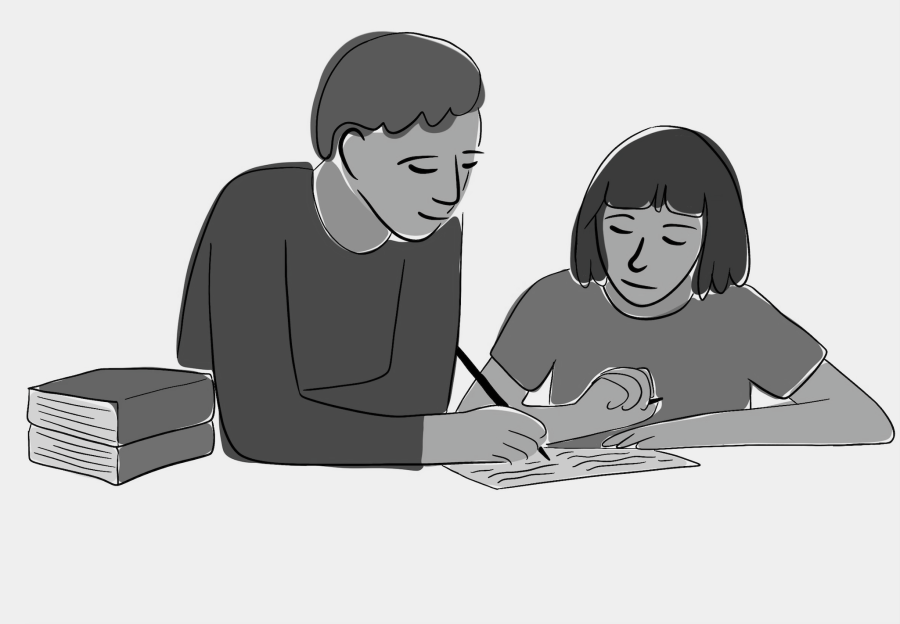Although COVID slowed the development of the Multi-Tier System of Support, the Paly MTSS faculty team are working to solidify the idea of MTSS so that teachers can be equipped for struggling students.
Used at many high schools in the United States, the Multi-Tier System of Support is a comprehensive method for teachers to best equip students with educational support.
Mathematics teacher Deanna Chute who is at the head of the MTSS committee said MTSS is a way for schools to provide personalized help for students.
“It’s a framework that’s all about multiple levels of support,” Chute said. “It’s the idea of looking at data to target who needs support in various areas such as academics, behavioral and social-emotional learning, and attendance.”
Chute said the data is derived from records such as grades, attendance and surveys that give insight into each student’s performance. Based on the data, the system is split into three different tiers of support according to student needs.
“The framework has three tiers,” Chute said. “The first tier is called Universal Support, and all students get them: PRIME, the Wellness Center, and Advisory. Then, there’s tier two, which is a bit more targeted, and tier three, which is much more intensive.”
Rather than MTSS being a program geared to a group of students, Chute said MTSS helps faculty know how to help each student with their unique needs.
“MTSS is putting student need-based assistance in a structure so that all of the families, teachers and administrators know what the first tier of help looks like,” Chute said. “And when this doesn’t work, we try the second tier and so on.”
This year, the teachers are working to solidify the three tiers of support.
U.S. history teacher Katya Villalobos, who is part of the MTSS faculty committee, said the framework is more of a mindset than a program.
“It’s not a program,” Villalobos said. “It’s actually how we think about the school in terms of what we know because we’re a large comprehensive high school.”
However, because MTSS is not a district-led program at Paly, Chute said it will not be a mandatory, school-wide change.
“Unless the district mandates something, teachers have every right to choose what they do in their classrooms,” Chute said. “They can grade what they want to grade, have their own rules, and you can’t change those things.”
But the core ideas of MTSS ensure teachers know what to do when students are struggling under their supervision, Chute said..
“What I’m trying to do is house everybody within a system so that no matter which teacher you are on campus, if they have a student struggling, they have a variety of things you can try,” Chute said. “So it’s almost like having a menu that has options that teachers can choose from, and you’re not going to see uniformity across campus.”
Villalobos said the Peer Tutoring Center, Wellness Center, and school therapists are examples of first-tier support programs implemented at Paly. However, the degree of support the school offers can shift due to changing data.
Furthermore, because Paly is already well-funded and resourced, Villalobos said MTSS is based on improving resources the school has rather than focusing on the resources it lacks.
“It’s seeing what you already have, making improvements and making sure that the students have access to those support systems,” she said.
Villalobos also said the concepts behind MTSS have served students the entire time she’s been employed by PAUSD, but the system has evolved to offer greater social-emotional support.
“When I first encountered it a long time ago, the research was on the idea of RTI, or response to intervention,” Villalobos said. “RTI is a way of targeting students that need additional support, but one thing that we noticed at the administrator level is students didn’t just need academic support, they also needed social-emotional support.”
Villalobos said the greater focus on student mental well-being led to the formation of the Wellness Center and different forms of emotional support for students in the district, though Chute said it hasn’t always been easy to keep an MTSS system strong.
“Many of the elements of MTSS have certainly been at Paly, but structuring them with that mindset has been stopped and started over the years.” Chute said. “There are many teachers on this campus that have been working hard in these areas for a number of years, but a lot of reasons, like COVID, slowed the movement.”
This year, teachers have begun to implement MTSS through their work in committees. A specific staff MTSS committee is helping other teachers implement MTSS in their classrooms in various ways.
“Right now, we’re looking at how we use the technology that we have to make it easier to make sure that we’re getting that information out there,” Villalobos said. “We hope that we can have something available to the teachers sometime at the end of January for the second semester.”
And Chute said MTSS’s success is based on communication and collaboration among teachers.
“It’s all about getting the adults on this campus talking collaborating and working together to support kids with strategies,” Chute said. “With adults in the right places providing the right help getting all that kind of lined up, I think students will have an even healthier learning environment.”

